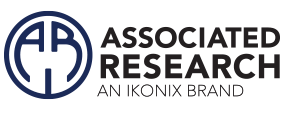MEDICAL DEVICE CASE STUDY
Applications Consulting / 4 Days
May 2021
Medical Components
A medical component manufacturer requested a 4 day on-site visit from our Applications Consulting Team tailored to train test operators, validate their test systems, and conduct procedure assessments. The first two days our Applications Consulting Team worked with operators and technicians, focusing on theoretical classroom style training and hands on electrical safety compliance training. The remaining two days were spent with the engineering team and consisted of in-depth IQOQ system validations and a thorough assessment of their current procedures. Presently the client uses Ikonix’s OMNIA® II and model 6005 from Associated Power Technologies. Participants included job titles such as: Manufacturing Engineers, Electrical Engineers, and Lead Technicians. Prior to the visit, there was a lack of understanding with test lead connections and what test results to expect after a test has completed.
Consulting Visit
Day 1:
Started with classroom style training consisting of Basics of Electricity, Safety in the Workplace, and EST 102. We toured the customer’s production lines to assess two of their most prominent products. We found that the customer’s high voltage leads were connected during Hipot testing, which then posed as a major shock hazard. The customer did not have a full verification method and operators wore ESD smocks while Hipot testing – another shock hazard. The customer had a concern regarding the creation of test procedures and the IQOQ validation process.
Day 2:
Majority of the day was spent presenting and reviewing IQOQ documents. The customer currently uses a self-written LabVIEW software on a few lines, which automatically loads test files with barcodes and saves the results. One of the trainee’s had a device under test they were writing a procedure for and wanted to work through this together, so we walked through a complete product demo. The customer also had an application that required 10 test points to be checked manually against each other. We made the recommendation of incorporating a scanning matrix to improve efficiency with this product.
Day 3:
The third day was spent performing another product demo, this time highlighting each test parameter and an emphasis on theoretical test lead connections. Since this customer was a contract manufacturer, it was common for them to receive test procedures from their customer which were “blindly” followed. We found various tests that were performed incorrectly, including a Hipot test ran between HV on the line and Return on the Neutral. We made various recommendations to improve their test connections to avoid improper testing, shock hazards, and testing redundancies.
Day 4:
On the final day the customer requested a demonstration of our Autoware® 3 Software. We completed the 3rd full MedTest demo, this time controlling the test equipment with the software. Our Autoware 3 free trial was downloaded to a technician’s laptop so they could practice creating test files and performing a full test routine.
KEY POINTS
- Medical Equipment 60601-1 3rd Edition
- IQOQ System Validation
- Train staff on safe workstation practices
- Proper equipment setup and installation
- Test process improvements
- Test Automation
Consulting Notes
Overall, each day ended with positive feedback. Since this company is manufacturing not only their products but products for various other medical companies, EST procedures can become convoluted and overlooked. We were brought in to help with understanding different tests and confirm proper procedures. Trainees expressed how valuable the information provided was for future plans.




